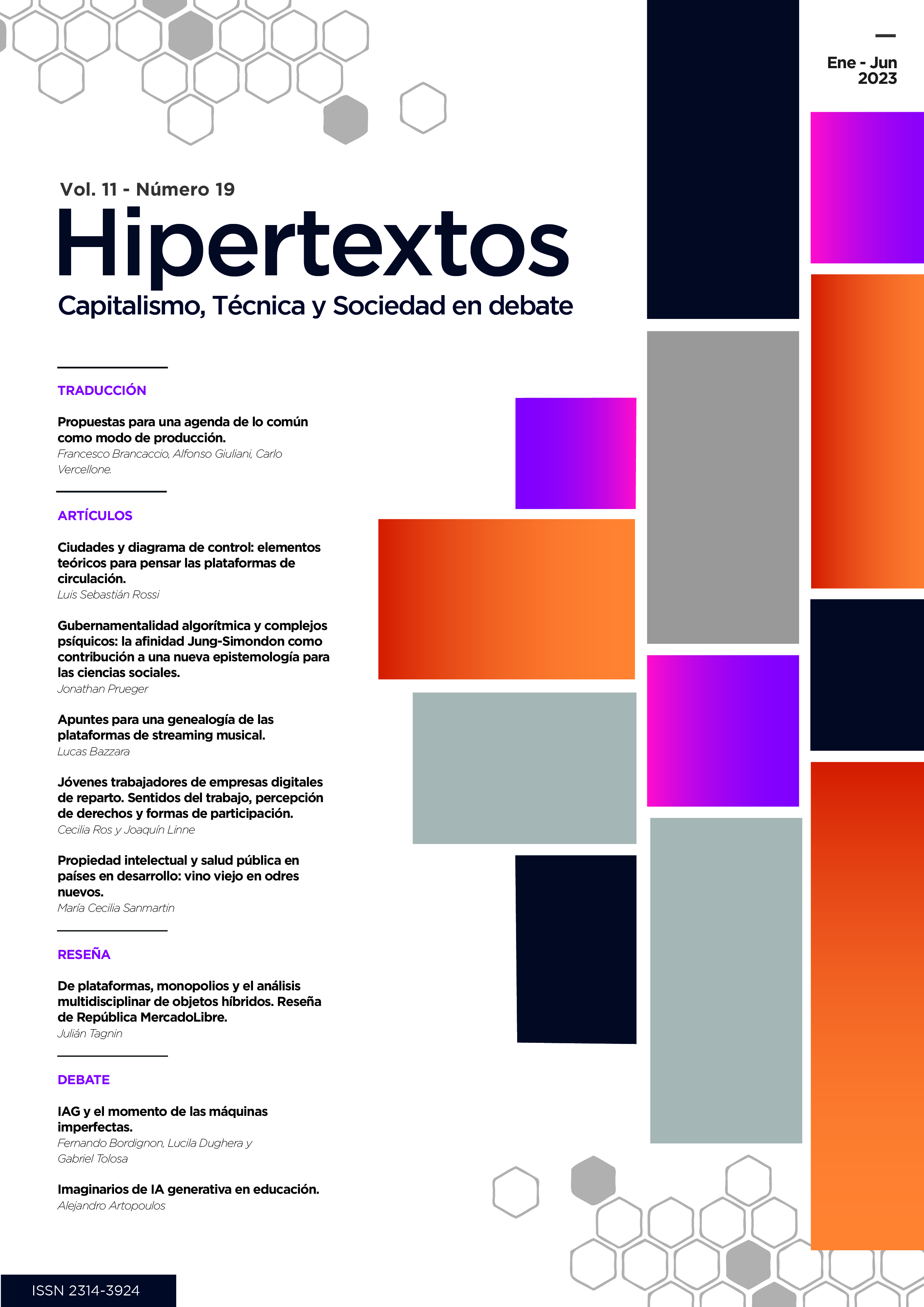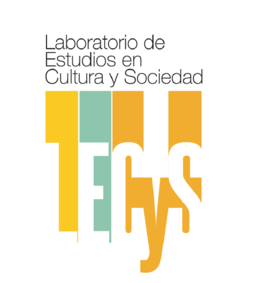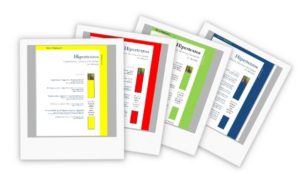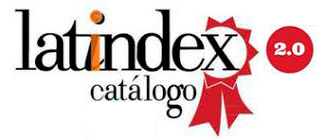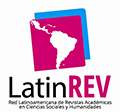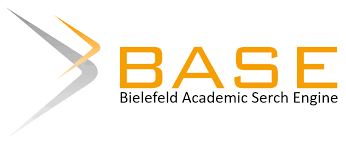Intellectual property and public health in developing countries: old wine in new skins.
DOI:
https://doi.org/10.24215/23143924e067Keywords:
intellectual property, COVID-19, patents, knowledge, vaccinesAbstract
In the context of the COVID-19 pandemic, transnational pharmaceutical companies worldwide joined the race for the accelerated development of a vaccine against COVID-19. However, the developments showed a concentration of the design and production of these vaccines in developed countries, accentuating the differences between the developed or central countries and the periphery/semi-periphery, in geopolitical terms. With the massification of informational goods and the the new “knowledge economy”, a redefinition process of intellectual property took place, because of the difficulty of appropriation of (tacit) knowledge and numerous risks of piracy. The jurisdictional expansion of intellectual property through the Trade-Related Intellectual Property Aspects Agreement (TRIPS) strongly contributed to accentuate the center-periphery dependence, by aligning and homogenizing (under the parameters, and in favor of, the central countries) the legislations about intellectual property of developing countries belonging to the World Trade Organization. In this context, large pharmaceutical companies worldwide concentrate capital, know-how and patents, remaining on the technological frontier, while depending on the technological and production capabilities of the semi-periphery, thus intensifying the dynamics of dependency. Different initiatives, such as the request for temporary exemption from TRIPS and the launch of a vaccine technology transfer hub in South Africa, sought to reduce these asymmetries between the center and the periphery in the context of the COVID-19 pandemic, with dissapointing results. The companies that own the intellectual property rights associated with the vaccine technologies refused to license their patents and share the tacit knowledge involved in the processes. In turn, many developed countries, members of the World Trade Organization, refused the TRIPS temporary exemption. In this way, the regulations, the big pharmaceutical companies and the governments of developed countries, constrained this type of initiatives that try to achieve a more equitable access to health throughout the world.
Downloads
References
Abrutzky, R., Godio, C. y Bramuglia, C. (2017). Producción estatal de medicamentos en la Argentina del siglo XXI1. Anuario Centro de Estudios Económicos de La Empresa y El Desarrollo, 9, 59–90.
Aguiar, D. y Thomas, H. (2009). Historia de los antecedentes a la creación de una empresa de biotecnología orientada a la salud en la Argentina: El “Área de Biotecnología” de Sidus (1980-1983). Revista de Humanidades Médicas & Estudios Sociales de La Ciencia y La Tecnología, 1(2), 3–44.
Alshrari, A. S., Hudu, S. A., Imran, M., Asdaq, S. M. B., Ali, A. M. y Rabbani, S. I. (2022). Innovations and development of COVID-19 vaccines: A patent review. Journal of Infection and Public Health, 15(1), 123-131.
Altindis, E. (2022). Inequitable COVID-19 vaccine distribution and the intellectual property rights prolong the pandemic. Expert Review of Vaccines, 21(4), 427-430. https://doi.org/10.1080/14760584.2022.2014819
Arocena, R. y Sutz, J. (2003). Inequality and innovation as seen from the South. Technology in Society, 25(2), 171-182. https://doi.org/10.1016/S0160-791X(03)00025-3
Arrow, K. J. (1962). The Economic Implications of Learning by Doing. Review of Economic Studies, XXIX (80), 573 – 172.
Balawejder, F., Sampson, S. y Stratton, T. (2021). Lessons for industrial policy from development of the Oxford/AstraZeneca Covid-19 vaccine. March, 1–22.
Barton, J. H. (2004). TRIPS and the global pharmaceutical market. Health Affairs, 23(3), 146-154. https://doi.org/10.1377/hlthaff.23.3.146.
Bell, M. y Pavitt, K. (1995). The development of technological capabilities. Trade, Technology and International Competitiveness, 22(4831), 69-101.
Blinder, D., Zubeldía, L. y Surtayeva, S. (2021). Covid-19 and Semi-Periphery: Argentina and the Global Vaccines Research and Development. Journal of World-Systems Research, 27(2), 495–521. https://doi.org/10.5195/JWSR.1
CEPAL, N. (2014). Cambio estructural para la igualdad: una visión integrada del desarrollo.
Chan, L. H. y Lee, P. K. (2022). How nationalism and xenophobia drive China’s ‘zero-COVID’policy. The Diplomat.
Chattu, V. K., Singh, B., Kaur, J. y Jakovljevic, M. (2021). COVID-19 vaccine, TRIPS, and global health diplomacy: India’s role at the WTO platform. BioMed Research International, 2021. https://doi.org/10.1155/2021/6658070
Chaudhary, T. y Chaudhary, A. (2021). TRIPS waiver of COVID‐19 vaccines: Impact on pharmaceutical industry and what it means to developing countries. The Journal of World Intellectual Property, 24(5-6), 447-454. https://doi.org/10.1111/jwip.12198
Cohen, J. (2022, 29 de agosto). Scientists question Moderna invention claim in COVID-19 vaccine dispute. Science AAAS. https://www.science.org/content/article/scientists-question-moderna-invention-claim-covid-19-vaccine-dispute
Contreras, J. L. (2021). US Support for a WTO waiver of COVID-19 intellectual property. Intereconomics, 56(3), 179-180. https://doi.org/10.1007/s10272-021-0976-7
Correa, C. M. (2021). A Response to COVID-19 and beyond: Expanding African Capacity in Vaccine Production. CIAT.
Correa, J. I. (2021). Acceso a vacunas contra el COVID-19: el impacto de las patentes. Pensar en Derecho, 18 (123).
Cortes, M. de los A., Cardoso, D., Fitzgerald, J. y DiFabio, J. L. (2012). Public vaccine manufacturing capacity in the Latin American and Caribbean region: Current status and perspectives. Biologicals, 40(1), 3–14. https://doi.org/10.1016/j.biologicals.2011.09.013
Corvalán, D. (2017). Des-aprendizaje y pérdida de capacidades locales: El calendario nacional de vacunación en Argentina. Ciencia, Docencia y Tecnología, 28(54), 1–37.
Cozzi, G. y Galli, S. (2022). Covid-19 Vaccines, Innovation, and Intellectual Property Rights (No. 1095). GLO Discussion Paper.
Cuello, M. (2021). La producción de vacunas contra el COVID-19 como insumo para la competitividad del sector farmacéutico argentino. Divulgatio. Perfiles Académicos de Posgrado, 5(15), 27–52. https://doi.org/10.48160/25913530di15.167
Dagnino, R. y Thomas, H, (2000). Elementos para una renovación explicativa-normativa de las políticas de innovación latinoamericanas. Revista Espacios, 21 (2).
David, P. A. y Foray, D. (2002). Fundamentos economicos de la sociedad del conocimiento (Economic Foundations of the Knowledge Society. With English summary. Comercio Exterior, 52.
Davies, M. (2022). Covid-19: WHO efforts to bring vaccine manufacturing to Africa are undermined by the drug industry, documents show. The BMJ, 376, o304. http://dx.doi.org/10.1136/bmj.o304
Di Bello, M. E. (2018). Construyendo sentidos de utilidad. Investigadores, conocimientos científicos y problemas públicos. Ciencia, Docencia y Tecnología, 29(57), 01–35. https://doi.org/10.33255/2957/367
Dosi, G. y Cimoli, M. (1994). De los paradigmas tecnológicos a los sistemas nacionales de producción e innovación. Comercio exterior, 44(8), 669-82.
Drahos, P. y Braithwaite, J. (2004). Who owns the knowledge economy?: Political organising behind TRIPS. Corner House.
Drexler, J. F. y Hoffmann, B. (2021). COVID-19 in Latin America: Where we stand and what is to come.
Dulcich, F. (2018). Especialización internacional y el escaso desarrollo endógeno de tecnología en la Argentina. Ciencia, Docencia y Tecnología, 29(56), 74–108. https://doi.org/10.33255/2956/326
Erfani, P., Binagwaho, A., Jalloh, M. J., Yunus, M., Farmer, P. y Kerry, V. (2021). Intellectual property waiver for covid-19 vaccines will advance global health equity. The BMJ, 374, 1837. https://doi.org/10.1136/bmj.n1837
Gadelha, C. A. G., Braga, P. S. D. C., Montenegro, K. B. M. y Cesário, B. B. (2020). Access to vaccines in Brazil and the global dynamics of the Health Economic-Industrial Complex. Cadernos de Saude Publica, 36. https://doi.org/10.1590/0102-311X00154519
Gaviria, M. y Kilic, B. (2021). Réseau des brevets des vaccins à ARNm du COVID-19. Nature Biotechnology, 39, 546-548. https://doi.org/10.1038/s41587-021-00912-9
Gemünden, M. y Thiel, J. (2021). COVAX needs a political future. CSS Policy Perspectives, 9(4), 9–13. https://doi.org/10.3929/ethz-b-000477802
Gutman, G. E. y Lavarello, P. J. (2014). Biopharmaceuticals and firm organisation in Argentina: Opportunities and challenges. International Journal of Technology and Globalisation, 7(3), 159–178. https://doi.org/10.1504/IJTG.2014.064740
Gutman, G., Lavarello, P., Pita, J. J., Jelinski, F., Rivas, D., Marín, G. y de Vita, M. (2021). Desarrollo de capacidades biofarmacéuticas a partir de la compra gubernamental en la provincia de Buenos Aires.
Hurtado, D., Lugones, M. y Surtayeva, S. (2017). Tecnologías de propósito general y políticas tecnológicas en la semiperiferia: el caso de la nanotecnología en la Argentina. Revista Iberoamericana de Ciencia Tecnología y Sociedad, 12(34), 65-93.
Hurtado de Mendoza, D. F. y Zubeldia Brenner, L. (2017). El rol de las universidades públicas argentinas en el desarrollo económico. Política Universitaria, 4, 24-33
Hurtado, D. y Souza, P. (2018). Geoeconomic Uses of Global Warming: The “Green” Technological Revolution and the Role of the Semi-Periphery. Journal of World-Systems Research, 24(1), 123-150. https://doi.org/10.5195/jwsr.2018.700.
Quién es quién en la fabricación de la vacuna del COVID-19 en la Argentina. (12 de agosto de 2020). Infobae. https://www.infobae.com/economia/2020/08/13/quien-es-quien-en-la-fabricacion-de-la-vacuna-del-covid-19-en-la-argentina/
Inzaule, S. C., Ondoa, P., Loembe, M. M., Tebeje, Y. K., Ouma, A. E. O. y Nkengasong, J. N. (2021). COVID-19 and indirect health implications in Africa: Impact, mitigation measures, and lessons learned for improved disease control. PLoS Medicine, 18(6). https://doi.org/10.1371/journal.pmed.1003666
Ipsen, A. (2016). Manufacturing a natural advantage: capturing place-based technology rents in the genetically modified corn seed industry. Environmental Sociology, 2(1), 41-52. https://doi.org/10.1080/23251042.2015.1123598
Kapczynski, A. (2023). The Political Economy of Market Power in Pharmaceuticals. Journal of Health Politics, Policy and Law, 48 (2), 215–239. https://doi.org/10.1215/03616878-10234184
Kline, S. J. y Rosenberg, N. (1986). An overview of innovation. The positive sum strategy. Harnessing Technology for Economic Growth, 14, 640.
Kreimer, P., Romero, L. A. y Bilder, P. (2010). ¿Tratar o no tratar? La controversia científica sobre el tratamiento para los enfermos de chagas crónico. Revista de Historia de La Medicina y de La Ciencia, LXII(2), 405–427.
Lall, S. (1992). Technological capabilities and industrialization. World Development, 20(2), 165-186.
Lanjouw, J. O. y Cockburn, I. M. (2001). New pills for poor people? Empirical evidence after GATT. World Development, 29(2), 265-289. https://doi.org/10.1016/S0305-750X(00)00099-1
Le, T. T., Andreadakis, Z., Kumar, A., Román, R. G., Tollefsen, S., Saville, M. y Mayhew, S. (2020). The COVID-19 vaccine development landscape. Nature Reviews Drug Discovery, 19(5), 305-306. https://doi.org/10.1038/d41573-020-00073-5
Liaudat, S., Terlizzi, M. S. y Zukerfeld, M. (2020). Piratas, virus y periferia: la apropiación impaga de conocimientos en el capitalismo, del PLACTS a la COVID-19. Argumentos. Revista de Crítica Social, 22, 1-42.
Liu, T., He, Z., Huang, J., Yan, N., Chen, Q., Huang, F. y Ming, W. K. (2021). A comparison of vaccine hesitancy of COVID-19 vaccination in China and the United States. Vaccines, 9(6), 649.
López, A. (1998). La reciente literatura sobre la economía del cambio tecnológico y la innovación: una guía temática. Revista de Industria y Desarrollo, 1(3), 105-156.
Lundvall, B. A. (1992). National systems of innovation: Towards a theory of innovation and interactive learning. JSTOR. http://www.jstor.org/stable/j.ctt1gxp7cs
Lundvall, B.A. y Johnson, B. (1994). The learning economy. Journal of Industry Studies, 1(2), 23-42.
Martin, C. y Lowery, D. (2020). mRNA vaccines: Intellectual property landscape. Nature Reviews Drug Discovery, 19(9), 578-579.
Matthews, D. (2003). Globalising intellectual property rights: the TRIPS Agreement. Routledge.
Medeiros, M. Z., Soares, P. F., Fialho, B. C., Gauss, L., Piran, F. S. y Lacerda, D. P. (2022). Vaccine innovation model: A technology transfer perspective in pandemic contexts. Vaccine, 40(33), 4748–4763. https://doi.org/10.1016/j.vaccine.2022.06.054
Milstien, J. y Kaddar, M. (2006). Managing the effect of TRIPS on availability of priority vaccines. Bulletin of the World Health Organization, 84, 360-365.
Ministerio de Ciencia, Tecnologia e Innovación Productiva. (2012). Sector Farmacéutico. Boletín Estadístico Tecnológico, (5).
Nonaka, I. y Takeuchi, H. (1995). The Knowledge Creating. Oxford University Press.
Perrotta, D. (2021). Universities and Covid-19 in Argentina: From community engagement to regulation. Studies in Higher Education, 46(1), 30–43. https://doi.org/10.1080/03075079.2020.1859679
Price, W. N., Rai, A. K. y Minssen, T. (2020). Knowledge transfer for large-scale vaccine manufacturing. Science, 369(6506), 912-914. https://doi.org/10.1126/science.abc9588
Romero, L. A., Buschini, J., Vaccarezza, L. y Zabala, J. P. (2015). La universidad como agente político en su relación con el entorno municipal. Ciencia, Docencia y Tecnología, 51, 1–12.
Saied, A. A., Metwally, A. A., Dhawan, M., Choudhary, O. P. y Aiash, H. (2022). Strengthening vaccines and medicines manufacturing capabilities in Africa: challenges and perspectives. EMBO Molecular Medicine, 14(8), e16287. https://doi.org/10.15252/emmm.202216287
Sekalala, S., Forman, L., Hodgson, T., Mulumba, M., Namyalo-Ganafa, H. y Meier, B. M. (2021). Decolonising human rights: how intellectual property laws result in unequal access to the COVID-19 vaccine. BMJ Global Health, 6(7), e006169. http://dx.doi.org/10.1136/bmjgh-2021-006169
Serbin, A. (2021). América Latina: pandemia, desigualdad y disputas geopolíticas. Latin American Studies Association Forum, 52(3), 35-38.
Sharma, S. (2021). The debate around the access to vaccine and licensing amidst second wave of COVID-19 in India. Journal of World Intellectual Property, 24(5–6), 436–446. https://doi.org/10.1111/jwip.12195
Slaoui, M. y Hepburn, M. (2020). Developing safe and effective Covid vaccines—Operation Warp Speed’s strategy and approach. New England Journal of Medicine, 383(18), 1701-1703. https://doi.org/10.1056/NEJMp2027405
Stubrin, L. (2019). Evolución, capacidades y perspectivas futuras de las empresas biotecnológicas argentinas. En P. Pellegrini (Ed.), Biotecnología y emprendimientos: herramientas, perspectivas y desafíos (pp. 10–28). Universidad Nacional de Quilmes.
Thakur–Wernz, P. y Wernz, C. (2022). Impact of stronger intellectual property rights regime on innovation: Evidence from de alio versus de novo Indian bio-pharmaceutical firms. Journal of Business Research, 138, 457-473. https://doi.org/10.1016/j.jbusres.2021.08.074
The Lancet. (2021). India’s COVID-19 emergency. The Lancet, 397(10286), 1683. https://doi.org/10.1016/S0140-6736(21)01052-7
Usher, A. D. (2021). A beautiful idea: how COVAX has fallen short. The Lancet, 397(10292), 2322–2325. https://doi.org/10.1016/S0140-6736(21)01367-2
Ye, Y. (2022). China's first mRNA vaccine is close-will that solve its COVID woes? Nature. https://www.nature.com/articles/d41586-022-01690-3
Zelaya, M., Burgardt, N., Chiarante, N. y Piñeiro, F. (2021). Producción Pública de Medicamentos y Vacunas: análisis histórico y de políticas científicas con foco en el caso. En F. Bernabé (coord.), F. di Pascuo, L. Giri, C. Rendon y J. Sutz (eds.), Filosofía e historia de la ciencia y sociedad en Latinoamérica (pp. 181–202). Asociación de Filosofía e Historia de La Ciencia Del Cono Sur. http://rid.unrn.edu.ar/handle/20.500.12049/7121
Zhang, A. Z. (2021). Analysis of Pfizer Inc. under COVID-19. Academic Journal of Business & Management, 3(4), 15–17. https://doi.org/10.25236/AJBM.2021.030404
Ziesemann, C. (2022). Case study on COVID-19 vaccine patents in India and South Africa: A scenario analysis for better understanding the intellectual property currency. SSRN, 4183838. http://dx.doi.org/10.2139/ssrn.4183838
Zukerfeld, M. (2012). Discutiendo argumentos alrededor de la propiedad intelectual. En S. Lago Martínez (comp.), Ciberespacio y resistencias: exploraciones en la cultura digital (pp. 25-50). Hekht Libros.
Zukerfeld, M. (2017a). Knowledge in the age of digital capitalism. University of Westminster Press.
Zukerfeld, M. (2017b). The tale of the snake and the elephant: Intellectual property expansion under informational capitalism. The Information Society, 33(5), 243-260. https://doi.org/10.1080/01972243.2017.1354107.
Downloads
Published
How to Cite
Issue
Section
License

This work is licensed under a Creative Commons Attribution-NonCommercial-NoDerivatives 4.0 International License.

